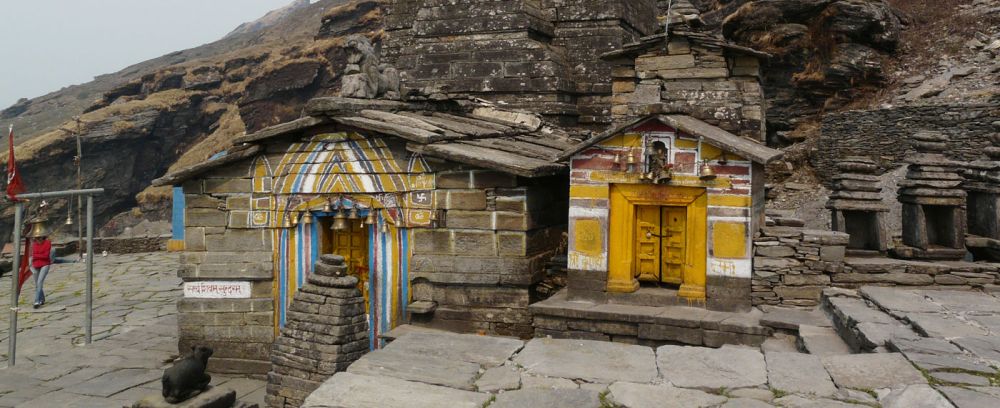

Nestled in the serene landscapes of the picturesque Indian state of Uttarakhand, the Kalpeshwar Temple is a sacred shrine revered in Hindu mythology. It is one of the five temples of the Panch Kedar pilgrimage circuit, dedicated to Lord Shiva. The history of the temple is intertwined with the legend of the Pandavas mentioned in the great Indian epic, the Mahabharata. It is believed that the Pandavas, after the battle of Kurukshetra, sought the blessings of Lord Shiva to absolve themselves of the sins of killing their kin during the war. However, Shiva was not willing to release them from their sins so easily, thus he disguised himself as a bull and hid in the Himalayan region. The Pandavas finally found him, but as they tried to catch the bull, it disappeared into the ground, reappearing in parts in different locations which constitute the Panch Kedar shrines.
The lock of hair (jata) of Lord Shiva is worshipped at Kalpeshwar Temple. It's fabled that the hair of Shiva appeared at the site where the temple stands today. This sacred site is not just a spiritual center but also a fusion of divine tranquility and natural splendor.
The allure of Kalpeshwar Temple has been a significant part of local tourism for centuries. Devotees trek through lush green forests and hilly terrains to reach this secluded temple, seeking spirituality and solace. The temple's setting in the Urgam Valley offers a fresh and untouched beauty that attracts not just pilgrims but also nature lovers and trekkers.
Traditionally, tourism in this region relied on the religious significance of the temple and the natural beauty of Auli and the surrounding areas. The best time to visit Kalpeshwar is between May and October, avoiding the harsh winter months when the region is prone to heavy snowfall making the trek routes impassable.
In recent years, there's been a noticeable shift in tourism trends at Kalpeshwar Temple. While it remains a pilgrimage site, there has been an increase in eco-tourism and adventure tourism. Visitors are now eager to explore the rich biodiversity of the Himalayan ecosystem; bird watching, nature walks, and the exploration of nearby meadows are becoming popular activities.
Furthermore, the government and various NGOs have started focusing on sustainable tourism practices to protect the local environment and promote the well-being of the indigenous communities. The development of infrastructure like better roads, guesthouses, and information centers has been initiated to attract more tourists while ensuring the preservation of the valley's pristine nature.
Digitalization has also touched upon the way tourists visit Kalpeshwar and the Auli region. With the advent of online portals, e-tickets for temple visits, and virtual reality experiences, the tourism industry is leveraging technology to enhance the tourist experience.